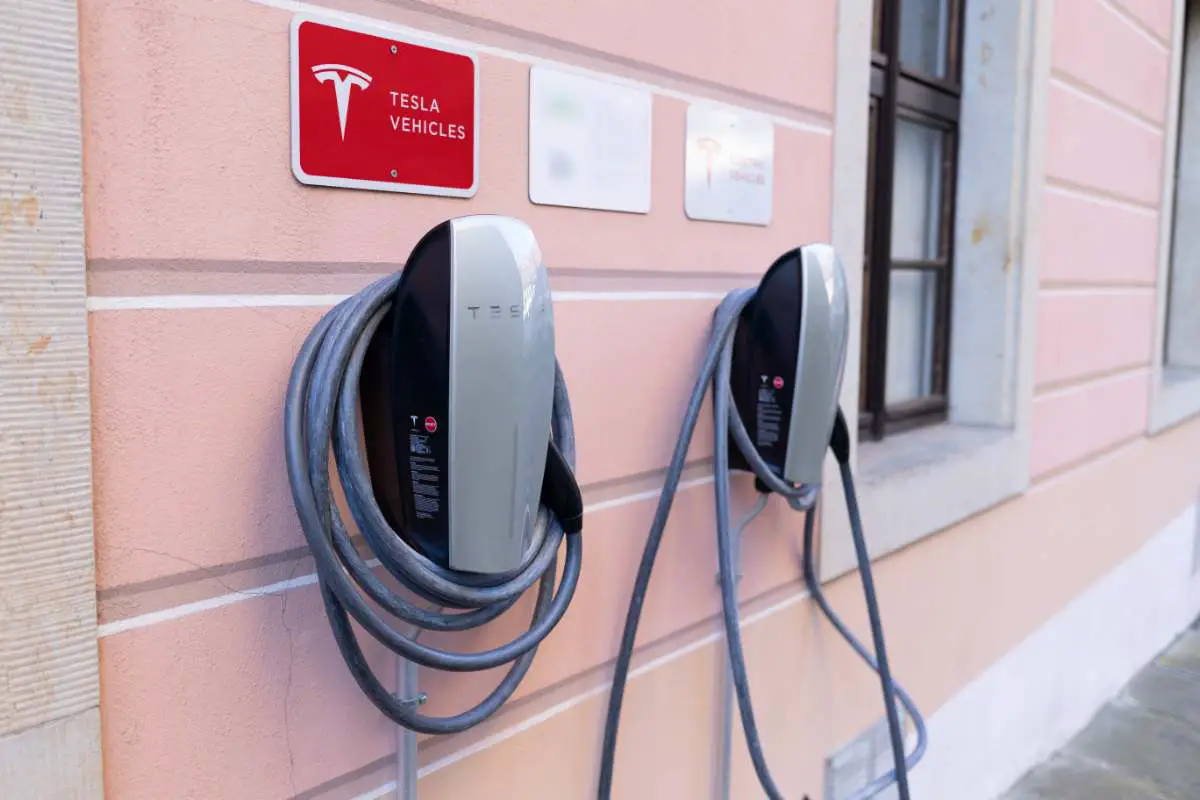Do Tesla chargers need GFCI protection? The straightforward answer is typically, no.
As a Tesla owner, you’ll find relief knowing that these electric vehicle chargers come with built-in GFCI technology, enhancing your car charging safety by reducing the risk of electrical shocks.
However, in this article, we’ll delve into the exceptions to this rule, highlighting the importance of understanding your local electrical code requirements and acknowledging how weather conditions may influence your need for additional ground fault protection.

Key Takeaways
| 1 | Tesla chargers generally do not require additional GFCI protection as they have built-in GFCI technology, making them safer and reducing the risk of electric shock. |
| 2 | Exceptions may apply based on location and setup. For instance, the 2020 NEC requires a GFCI breaker for any receptacle installed for EV charging. An outlet with a GFCI protection is also recommended if the EVSE is not hardwired. |
| 3 | Local codes may vary and have specific requirements or exceptions hence, it’s advisable to consult with a licensed electrical contractor before planning EV charger installations. |
Understanding the Inherent Safety of Tesla Chargers
Tesla, a leader in electric vehicle technology, has designed its chargers with safety as a top priority. Tesla chargers generally do not require additional GFCI protection.
Why is this? These chargers, known as Electric Vehicle Supply Equipment (EVSE), come equipped with built-in ground fault protection. This makes them inherently safer, reducing the risk of electric shock.
The presence of integrated GFCI technology in the Tesla charger emphasizes the brand’s commitment to safety. The ground fault protection monitors for any mismatches between power delivery conductors – an indication of a potential ground fault.
This inherent circuit protection reduces the need for additional external GFCI devices when the charger is hardwired.
However, it’s important to clarify that these are general guidelines and exceptions might apply depending on your specific setup or where you live.
National Electric Code (NEC) Recommendations
According to the 2020 National Electric Code (NEC), certain scenarios call for GFCI breaker inclusion. For instance, if a receptacle is installed specifically for electric vehicle charging, NEC stipulates that it must have a GFCI breaker. This electrical code requirement aims to ensure car charging safety.
Additionally, if your EVSE is plugged into an outlet instead of being hardwired, NEC recommends that this outlet includes GFCI protection. This provision is especially critical for outdoor electrical outlets where weather conditions may increase the likelihood of ground faults occurring.
Therefore, even though Tesla chargers come with built-in GFCI protection, following NEC’s recommendations can offer an extra level of safety.
Local Codes and Regulations
It’s worth noting that local codes and regulations can vary dramatically. Depending on your location, there may be specific requirements or exceptions to the general guidelines mentioned above. For instance, some areas may have more stringent rules regarding electrical grounding and safety.
That’s why it’s always recommended to consult with a licensed electrical contractor when planning to install an EV charger at home. These professionals understand the intricacies of local electrical code requirements and can ensure your Tesla charging station is installed safely and correctly.
Ultimately, understanding the need for GFCI protection in Tesla chargers involves comprehending the balance between built-in safety measures, national recommendations, and local regulations. With careful consideration and professional guidance, you can ensure your Tesla charger is as safe as possible.
As an electric vehicle owner, it’s essential to stay informed about various aspects, not just the need for GFCI protection for Tesla chargers. Understanding how to maintain and troubleshoot your Tesla is equally crucial.
For instance, should you ever face issues with your car’s software update getting stuck at 50%, my guide on rectifying a stalled Tesla software update could prove useful. It provides detailed steps and tips to help you get past the annoying 50% hurdle.
While we’re on the topic of maintenance, let’s not forget about handling minor glitches that may affect your driving experience. If your Tesla’s cruise control becomes unavailable, here are nine fixes I’ve tried and tested for this specific predicament. They’re straightforward and don’t require any expert assistance.
Moving beyond technical issues, did you know that you can’t flat tow a Tesla behind an RV? This is vital information for road trip enthusiasts who plan on taking their Tesla on holiday.
In conclusion, owning a Tesla comes with its own set of challenges and learning curves. But worry not! If your touchscreen stops responding or if the car won’t turn on at all, I’ve got you covered in another of my informative posts.
It’s a handy guide on what to do when your Tesla won’t start, ensuring you’re never left stranded due to unforeseen issues.
- Tesla Charger Installation Cost (Home Setups) - March 1, 2024
- Tesla Phone Key Disconnected (Troubleshooting Guide and Quick Fixes) - March 1, 2024
- Tesla FSD 12 (Explained) - March 1, 2024